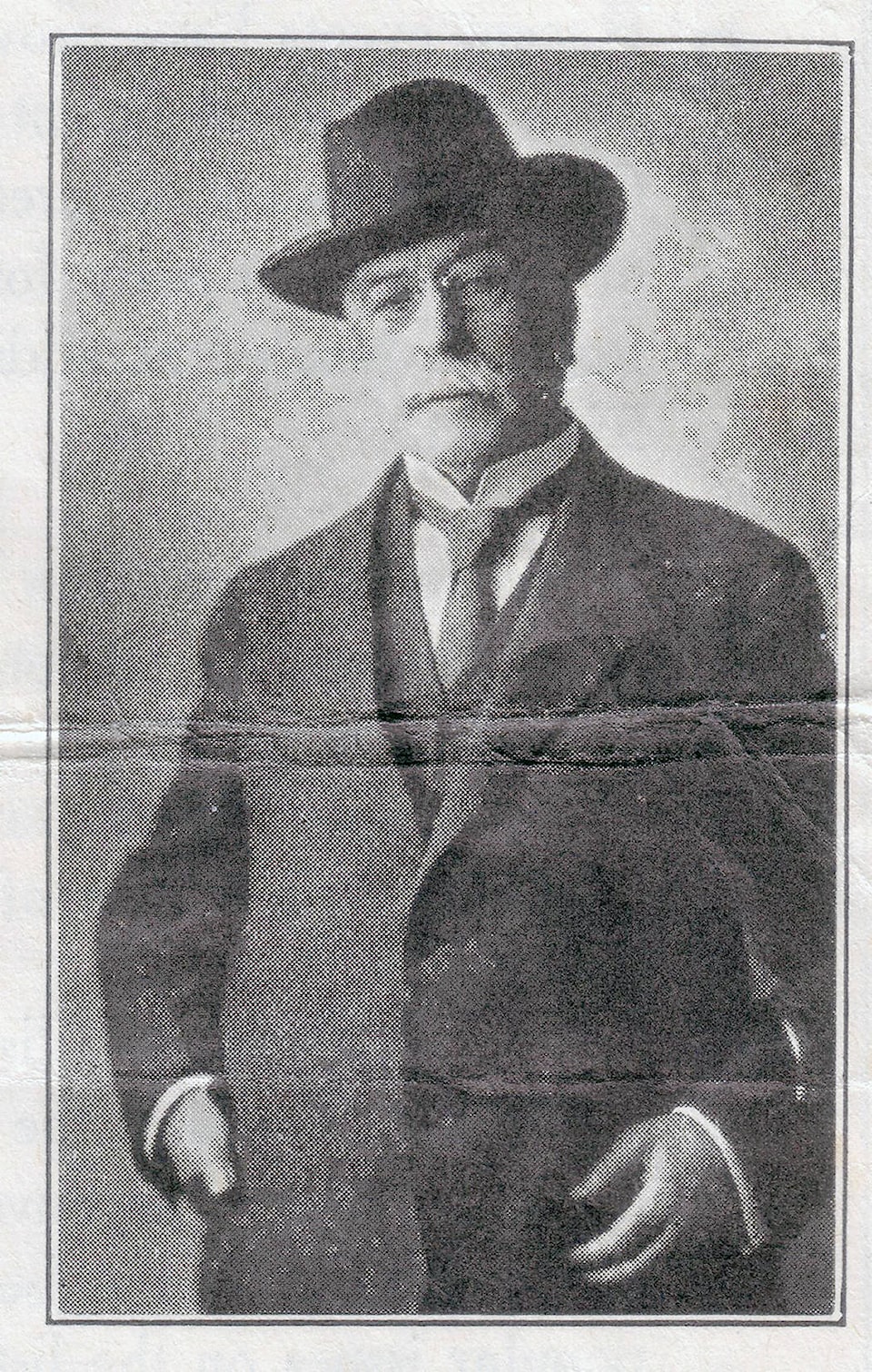Several of the fascinating characters who played a role in Rossland’s early development were associated with its newspapers.
One of the most interesting is P. A. O’Farrell.
Patrick Aloysius O’Farrell was born in 1855, in County Cork, Ireland, a few miles from the fabled Blarney Stone. If he did not kiss it, he absorbed its airs.
He grew up an obsessed Irish nationalist, but he favoured the pen over the barricades in waging his war for freedom.
O’Farrell came to the world’s attention as a young man writing vivid accounts of British oppression of Irish patriots for the Boston Post and its fervent Irish-American readers.
The Post brought him to America in 1889 and then he went west as the paper’s western correspondent, based in Tacoma. He became a well-known freelance writer, travelling around and writing flowery pieces about places he visited, interspersed with fiery talks about British soldiers and Irish nationalist heroes.
In 1892 he made a trip to Ireland — one of many — to marry his ever-loving Elizabeth (Lizzie).
O’Farrell’s travels took him to Montana, where he met people in the copper-mining industry.
In 1894, he demonstrated his persuasive powers by arranging an important international mining deal, involving a British takeover of some valuable Montana mining properties. This deal instantly established his reputation as a skillful negotiator, complementing his talent as a writer — both of which attracted the attention of Augustus Heinze, an ambitious mine and smelter owner in Butte, with an agenda. Heinze recognized a talent that could be useful.
Stories of the richness of its mines attracted Heinze to Rossland in 1894. He quickly became a convert and decided to build a smelter at Trail and a narrow-gauge railway between Rossland and Trail to efficiently transport ore to the smelter. But there were also potential mines beyond Rossland in the Boundary country that could feed his smelter, if only there was a railway.
A great frustration was the failure of the CPR to quickly extend its line into the Rossland area and beyond, to provide cheaper coke to the smelter and access to the Boundary area mines. Heinze was not a railway man, but he was astute politically. He decided on a two pronged campaign — a verbal assault on the CPR, its monopoly and its inaction, and a charter for his own railway to the west. To spearhead this campaign, he chose O’Farrell.
O’Farrell spent a week in Rossland in May, 1895, and wrote a rapturous story for the Butte Miner about the city “in its booming, thriving, happy youth.”
This was the first of several pieces, published in various papers, that exalted the richness of Rossland’s mines, designed to attract the attention of politicians as well as capitalists.
He made repeated visits to Victoria guiding a bill granting Heinze a charter as it was prepared and debated. It was approved, accompanied by a very substantial land grant, in March, 1896.
Then, in August, 1897, Heinze quietly acquired the Rossland Miner. O’Farrell was never announced as editor, but whether editor or not, he was Heinze’s man on the scene, in charge of the publicity campaign against the CPR. A series of biting editorials castigated the railway company and its officials for their failings with respect to the Kootenays. The surprising outcome was that the CPR bought the smelter and the railway charter, leaving Heinze a happy, richer man.
When Heinze returned to Butte, O’ Farrell went with him as editor of a Heinze newspaper, the Reveille. Heinze engaged in a struggle for political dominance in the region and O’ Farrell’s pen was his primary weapon. They did not win the battle, but through shrewd investments O’Farrell became a rich man.
O’Farrell then moved on. With his wife, he made an extended trip through the Kootenays, writing adoring pieces of travel literature. They travelled extensively, frequently crossing the ocean to Ireland, where their two children were in school.
Then, in one of those ironic twists that punctuate history, he was employed by the CPR as its publicity agent. He became a friend of Thomas Shaughnessy, head of the railway company, and the O’Farrrells began to move in high social circles. He fell in love with Vancouver, where they lived in the Hotel Vancouver, on and off from 1920 through 1924. As one of the city’s prime boosters, he proclaimed to the world that “some day Vancouver will be … (New York’s) …greatest rival for supremacy of any city on the continent.” He was the master of superlatives.
O’Farrell was a widely recognized and frequently quoted expert on copper, but he lost heavily in the stock market crash of 1929. He then became obsessed with the depression of the 1930s, promoting monetary reform, specifically the monetization of silver, as the only cure. He had become a “monetary crank.”
P.A. O’Farrell died in Dublin in December, 1933.
